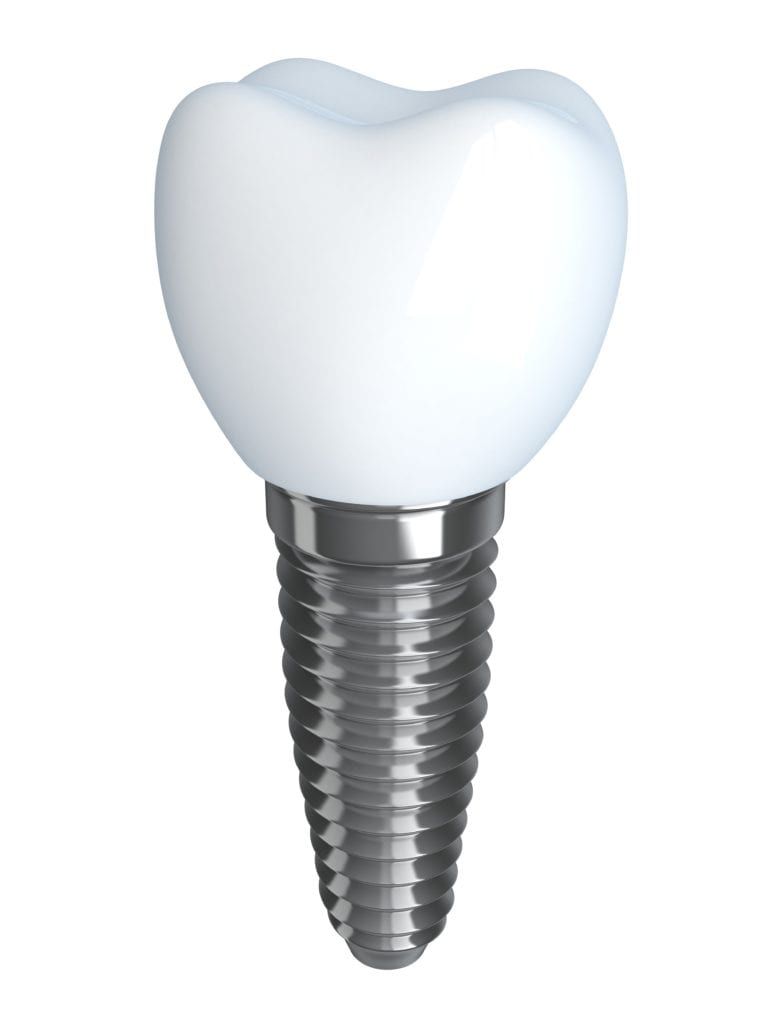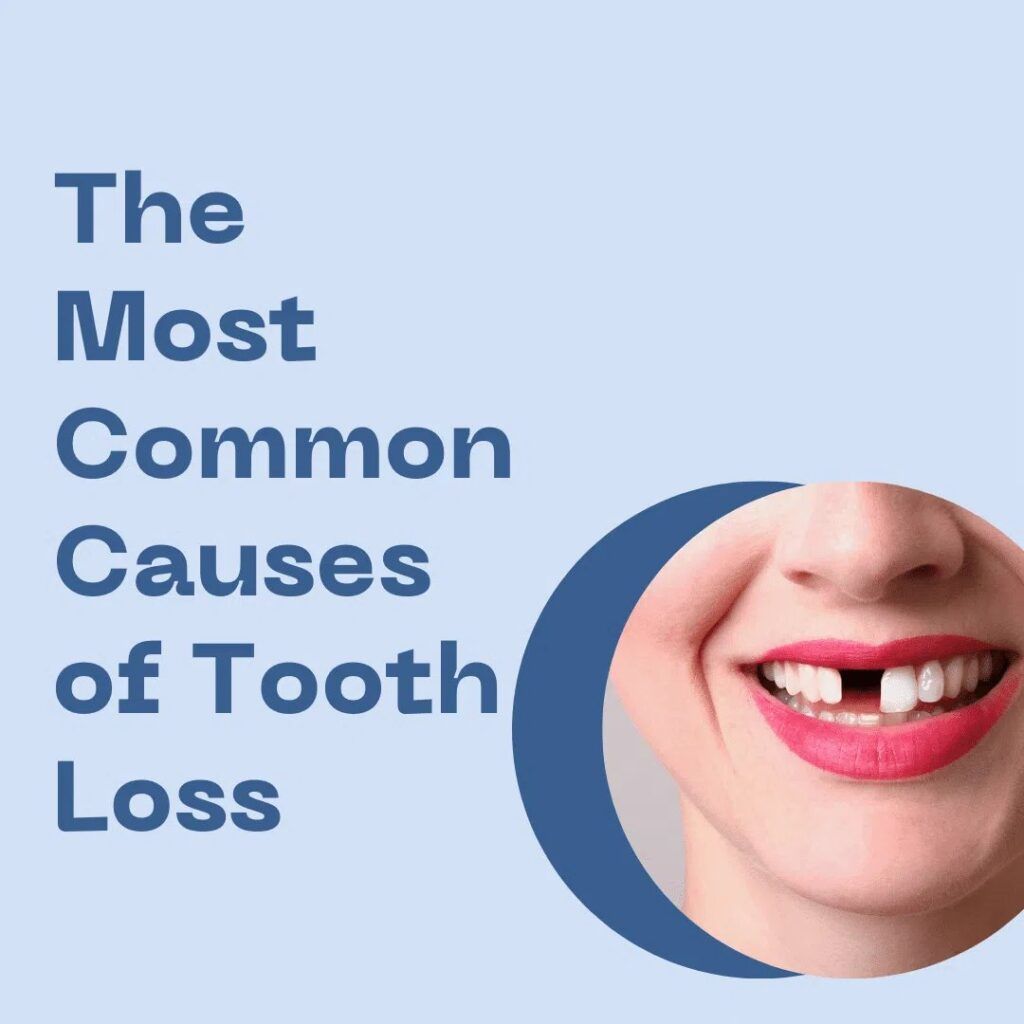Did you know that tooth loss is a major problem in the United States? According to the American College of Prosthodontists, about 120 million people in the US suffer from tooth loss. Tooth loss can have a significant impact on your oral health and quality of life, so it’s important to understand the causes and prevention methods. In this blog post, we will discuss the most common causes of tooth loss and how dental implants can be used to replace missing teeth.
Risk Factors for Tooth Loss
Tooth loss can affect anyone, but there are certain risk factors that make you more likely to experience tooth loss. Some of the most common risk factors include:

- Age: Tooth loss can occur at any age, but it is most common in older adults. According to the Centers for Disease Control and Prevention (CDC), more than one quarter (26%) of adults aged 65 and older have eight or less teeth and 1 in 6 (17%) have lost all their teeth.
- Smoking: Smoking is a major risk factor for tooth loss. According to the CDC, smokers are more than twice as likely to have lost all their teeth as nonsmokers.
- Poor oral hygiene: Poor oral hygiene can lead to a variety of oral health problems that increase the risk of tooth loss.
- Certain diseases and conditions: Certain diseases and conditions, such as diabetes, can increase the risk of tooth loss.
If you have any of these risk factors, it’s important to take steps to protect your teeth and gums. Maintaining good oral hygiene habits is essential, and you should also see a dentist for regular checkups and cleanings.
The Most Common Causes of Tooth Loss
The most common causes of tooth loss are gum disease, tooth decay, trauma, and other diseases and conditions. Let’s take a closer look at each of these causes.
Gum Disease

Gum disease, also known as gingivitis or periodontitis, is the most common cause of tooth loss in adults. Gum disease occurs when plaque and tartar buildup on the teeth and along the gums. This can lead to infection and inflammation, which can damage the teeth and gums. If left untreated, gum disease can lead to tooth loss.
Gum disease can lead to tooth loss in several ways. One way is by damaging the soft and hard tissue around the teeth. This can make it difficult for the teeth to stay in place, leading them to become loose and eventually fall out. Gum disease can also increase the risk of other oral health problems, such as tooth decay, which can also lead to tooth loss.
Tooth Decay
Tooth decay is another common cause of tooth loss. Tooth decay occurs when plaque and tartar buildup on the teeth. Plaque and tartar contain bacteria that eat away at the teeth, causing them to decay.
The bacteria will first eat through the enamel layer, then the dentin layer, and finally the pulp layer. Once the decay has reached the innermost pulp layer, the tooth essentially dies. As the tooth roots decay, this causes the tooth to become loose and eventually fall out.
Trauma
Trauma is another common cause of tooth loss. Trauma can occur from a variety of accidents, including sports injuries, car accidents, and falls. Basically any hard and sudden force to the mouth can be considered trauma. Some types of trauma may only damage the teeth and can be repaired. However, when the teeth are severely damaged from trauma, they may need to be removed if they haven’t already fallen or been knocked out.
Other Diseases and Conditions
There are other diseases and conditions that can also lead to tooth loss. Some of these include:
- Type 2 Diabetes
- Hypertension
- Rheumatoid arthritis
- Cancer
- Eating disorders
- Dementia
- Osteoporosis
- Systemic diseases
If you are experiencing tooth loss due to any of these conditions, it is important to seek treatment from a dentist.
How to Replace Missing Teeth

In the case that you find yourself missing one or more teeth, it is important to have the missing tooth or teeth replaced as soon as possible. This is because missing teeth can cause a variety of oral health problems, including:
- Difficulty chewing and eating
- Premature and/or uneven wear on teeth
- Shifting of the teeth, which can lead to crooked teeth or a crooked bite
- Overgrown teeth
- A decrease in the overall facial appearance
There are several ways to replace missing teeth. One way is by using dental implants. Dental implants are titanium posts that are surgically implanted into the jawbone. They act as replacement tooth roots, and over time they fuse with the bone tissue. This creates a strong foundation for dental restoration.
Dental implants are a popular option for replacing missing teeth. They are surgically placed in the jawbone and act as a replacement for the tooth root. Once the implant is in place, a dental prosthetic (false tooth) is attached to the implant. Dental implants can support three types of dental prosthetics: crowns, bridges, or dentures. They are also strong and durable, and they look and function just like natural teeth.
If you have lost one or more teeth, talk to your dentist about dental implants. They can help you decide if dental implants are the right option for you.
In Conclusion
Tooth loss is a major problem in the United States, and it can have a significant impact on your quality of life. The most common causes of tooth loss are gum disease, tooth decay, trauma, and other diseases and conditions. Dental implants are a popular option for replacing missing teeth. If you have lost one or more teeth, talk to your dentist about dental implants. They can help you decide if dental implants are the right option for you.
Thanks for reading! We hope this blog post has helped you understand the causes of tooth loss and how to prevent it. Stay tuned for more blog posts on oral health topics.

